Design of a Multi-Beam Switching Antenna Loaded with a Square Metasurface
Abstract
1. Introduction
2. Microstrip Antenna and Metasurface Design
3. Simulation and Analysis of the Metasurface Antenna
3.1. Design and Simulation of the Metasurface Unit Cell
3.2. Design and Simulation of the Metasurface Antenna
4. Fabrication and Measurement of the Metasurface Antenna
5. Results
Author Contributions
Funding
Data Availability Statement
Conflicts of Interest
References
- Hong, W.; Jiang, Z.H.; Yu, C.; Zhou, J.; Chen, P.; Yu, Z.; Zhang, H.; Yang, B.; Pang, X.; Jiang, M.; et al. Multibeam Antenna Technologies for 5G Wireless Communications. IEEE Trans. Antennas Propag. 2022, 65, 6231–6249. [Google Scholar] [CrossRef]
- Lei, L.; Wam, J.; Gong, Q. Multibeam Antennas with Reflector for High Throughput Satellite Applications. IEEE Aerosp. Electron. Syst. Mag. 2022, 37, 34–46. [Google Scholar] [CrossRef]
- Darvazehban, A.; Manoochehri, O.; Salari, M.A.; Dehkhoda, P.; Tavakoli, A. Ultra-wideband scanning antenna array with Rotman lens. IEEE Trans. Microw. Theory Tech. 2020, 65, 3435–3442. [Google Scholar] [CrossRef]
- Bantavis, P.I.; Kolitsidas, C.I.; Empliouk, T.; Le Roy, M.; Jonsson, B.L.G.; Kyriacou, G.A. A cost-effective wideband switched beam antenna system for a small cell base station. IEEE Trans. Antennas Propag. 2019, 66, 6851–6861. [Google Scholar] [CrossRef]
- Yin, X.; Ye, Z.; Rho, J.; Wang, Y.; Zhang, X. Photonic spin Hall effect at metasurfaces. Science 2013, 339, 1405–1407. [Google Scholar] [CrossRef] [PubMed]
- Yang, Y.; Kravchenko, I.I.; Briggs, D.P.; Valentine, J. All-dielectric metasurface analogue of electromagnetically induced transparency. Nat. Commun. 2014, 5, 5753. [Google Scholar] [CrossRef] [PubMed]
- Yao, Y.; Shankar, R.; Kats, M.A.; Song, Y.; Kong, J.; Loncar, M.; Capasso, F. Electrically tunable metasurface perfect absorbers for ultrathin mid-infrared optical modulators. Nano Lett. 2014, 14, 6526–6532. [Google Scholar] [CrossRef] [PubMed]
- Dong, D.S.; Yang, J.; Cheng, Q.; Zhao, J.; Gao, L.H.; Ma, S.J.; Liu, S.; Bin Chen, H.; He, Q.; Liu, W.W.; et al. Terahertz broadband low-reflection metasurface by controlling phase distributions. Adv. Opt. Mater. 2015, 3, 1405–1410. [Google Scholar] [CrossRef]
- Li, Y.B.; Wan, X.; Cai, B.G.; Cheng, Q.; Cui, T.J. Frequency-controls of electromagnetic multi-beam scanning by metasurfaces. Sci. Rep. 2014, 4, 6921. [Google Scholar] [CrossRef] [PubMed]
- Yu, N.; Aieta, F.; Genevet, P.; Kats, M.A.; Gaburro, Z.; Capasso, F. A broadband, background-free quarter-wave plate based on plasmonic metasurfaces. Nano Lett. 2012, 12, 6328–6333. [Google Scholar] [CrossRef] [PubMed]
- Kildishev, A.V.; Boltasseva, A.; Shalaev, V.M. Planar photonics with metasurfaces. Science 2013, 339, 1232009. [Google Scholar] [CrossRef] [PubMed]
- Lin, D.; Fan, P.; Hasman, E.; Brongersma, M.L. Dielectric gradient metasurface optical elements. Science 2014, 345, 298–302. [Google Scholar] [CrossRef] [PubMed]
- Holloway, C.L.; Kuester, E.F.; Gordon, J.A.; O’Hara, J.; Booth, J.; Smith, D.R. An overview of the theory and applications of metasurfaces: The two-dimensional equivalents of metamaterials. IEEE Antennas Propag. Mag. 2012, 54, 10–35. [Google Scholar] [CrossRef]
- Yang, F.; Rahmat-Samii, Y. Electromagnetic Band Gap Structures in Antenna Engineering; Cambridge University Press: Cambridge, UK, 2009. [Google Scholar]
- Feresidis, A.P.; Goussetis, G.; Wang, S.; Vardaxoglou, J. Artificial magnetic conductor surfaces and their application to low-profile high-gain planar antennas. IEEE Trans. Antennas Propag. 2005, 53, 209–215. [Google Scholar] [CrossRef]
- Liu, S.; Chen, H.; Cui, T.J. A broadband terahertz absorber using multi-layer stacked bars. Appl. Phys. Lett. 2015, 106, 151601. [Google Scholar] [CrossRef]
- Huang, Y.W.; Chen, W.T.; Tsai, W.Y.; Wu, P.C.; Wang, C.-M.; Sun, G.; Tsai, D.P. Aluminum plasmonic multicolor meta-hologram. Nano Lett. 2015, 15, 3122–3127. [Google Scholar] [CrossRef] [PubMed]
- Manoochehri, O.; Darvazehban, A.; Salari, M.A.; Emadeddin, A.; Erricolo, D. A parallel plate ultrawideband multibeam microwave lens antenna. IEEE Trans. Antennas Propag. 2022, 66, 4878–4883. [Google Scholar] [CrossRef]
- Liu, S.; Jiang, K.; Xu, G.; Zhang, K.; Fu, J.; Wu, Q. A dual-band shared aperture antenna array in Ku/Ka-bands for beam scanning applications. IEEE Access 2019, 7, 78794–78802. [Google Scholar] [CrossRef]



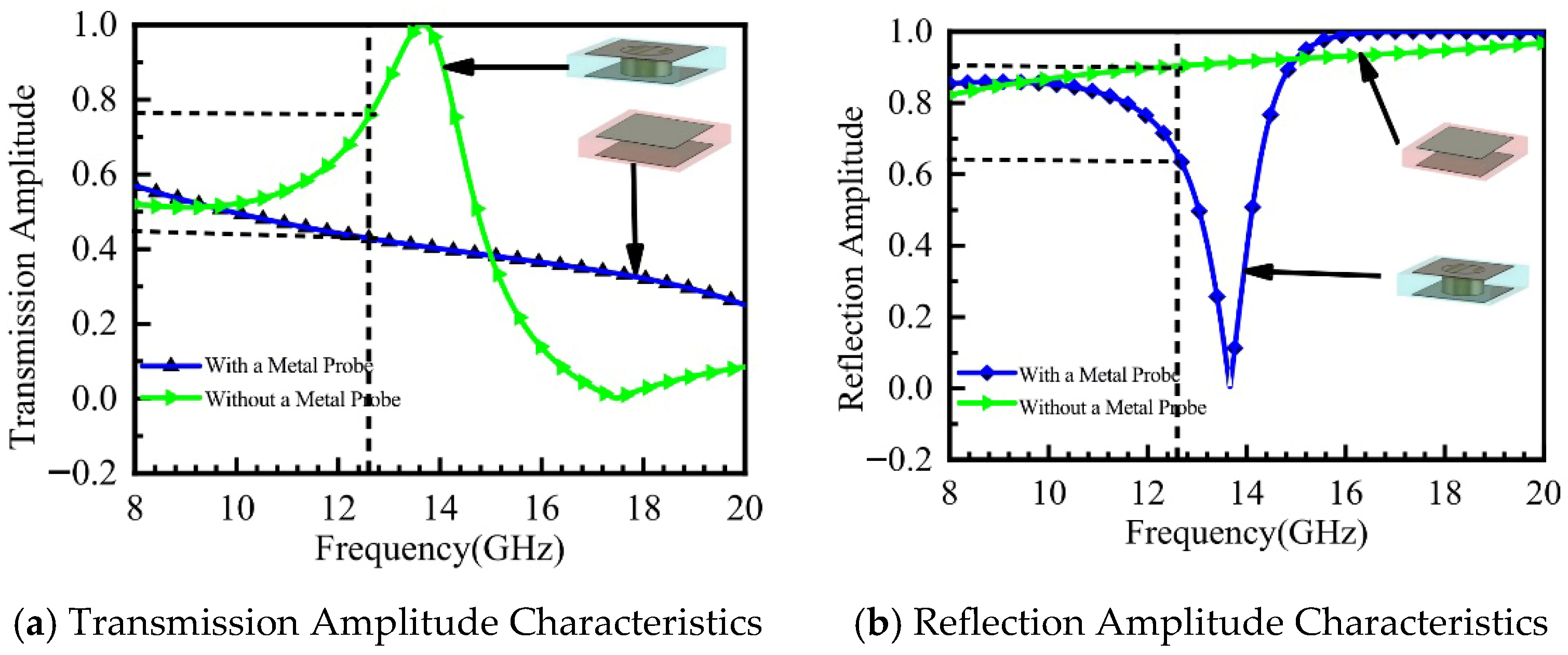
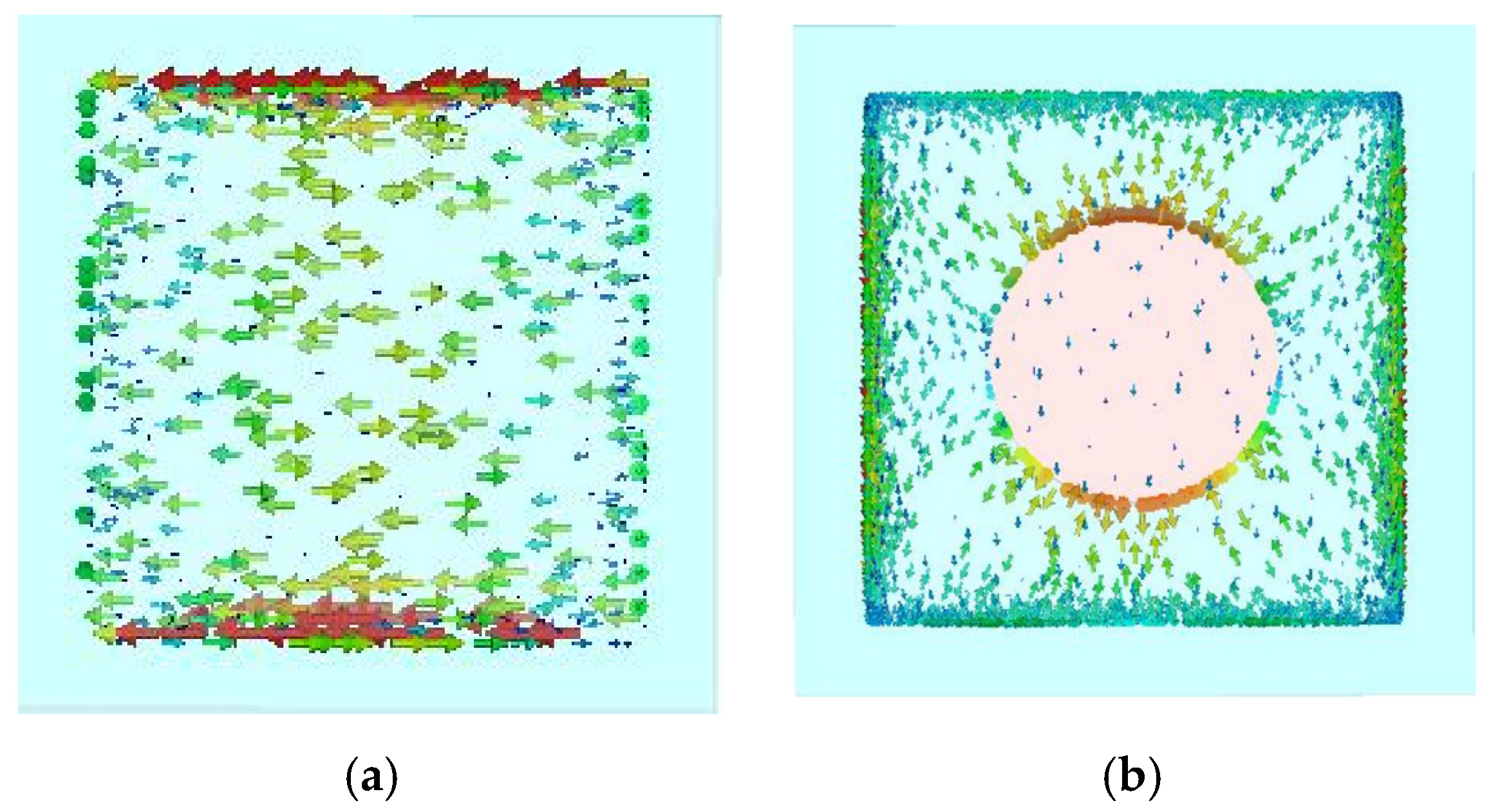
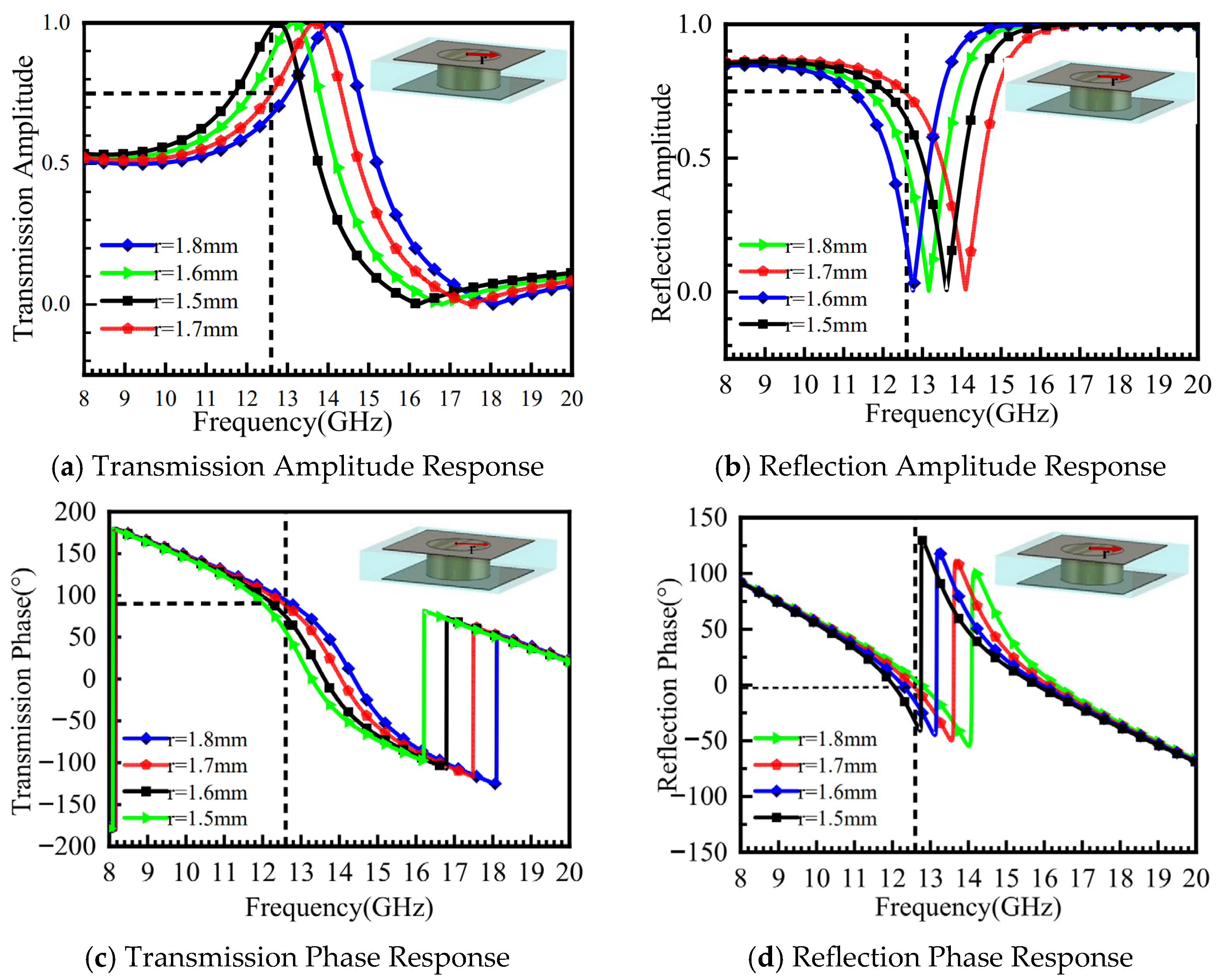

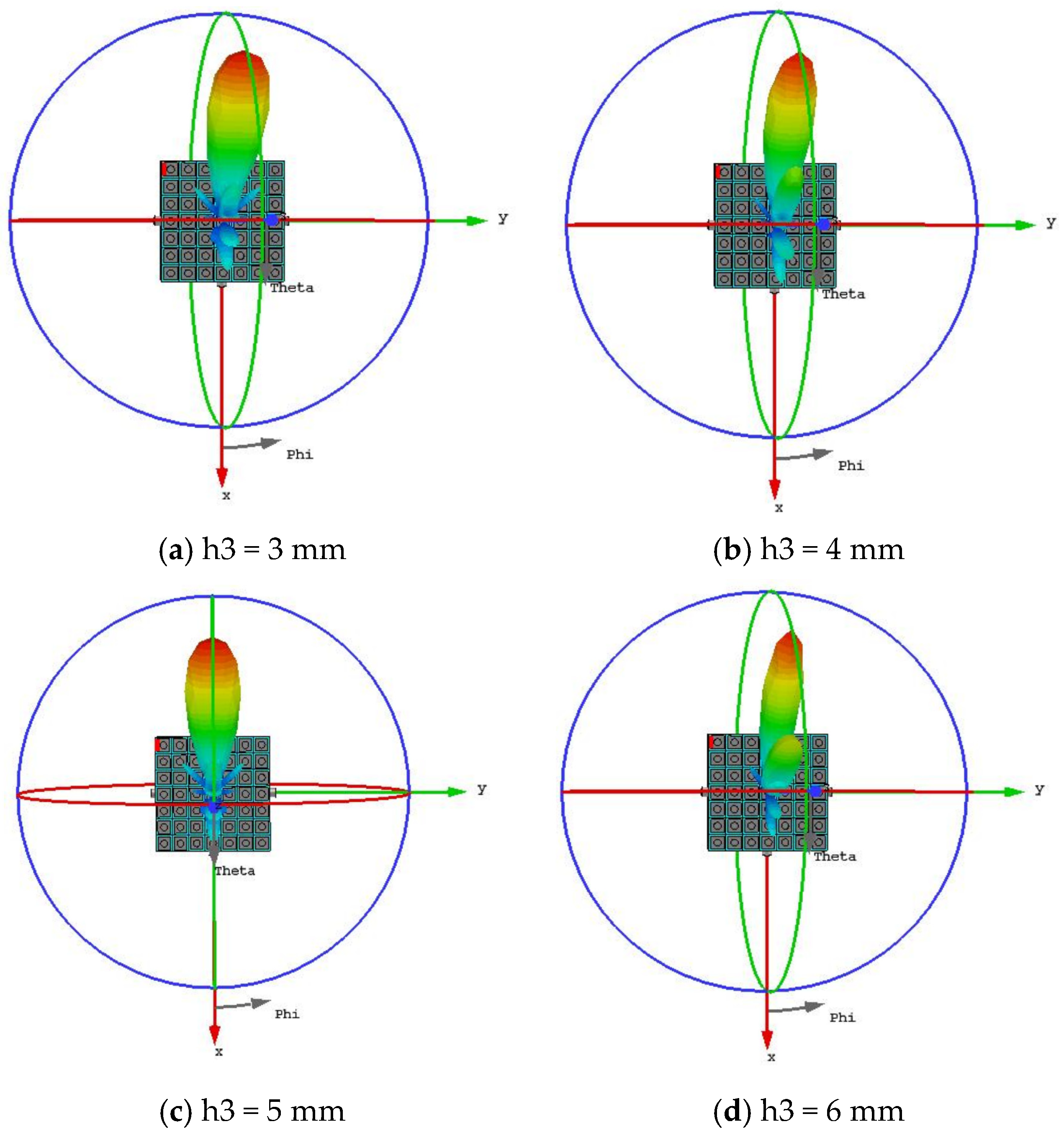


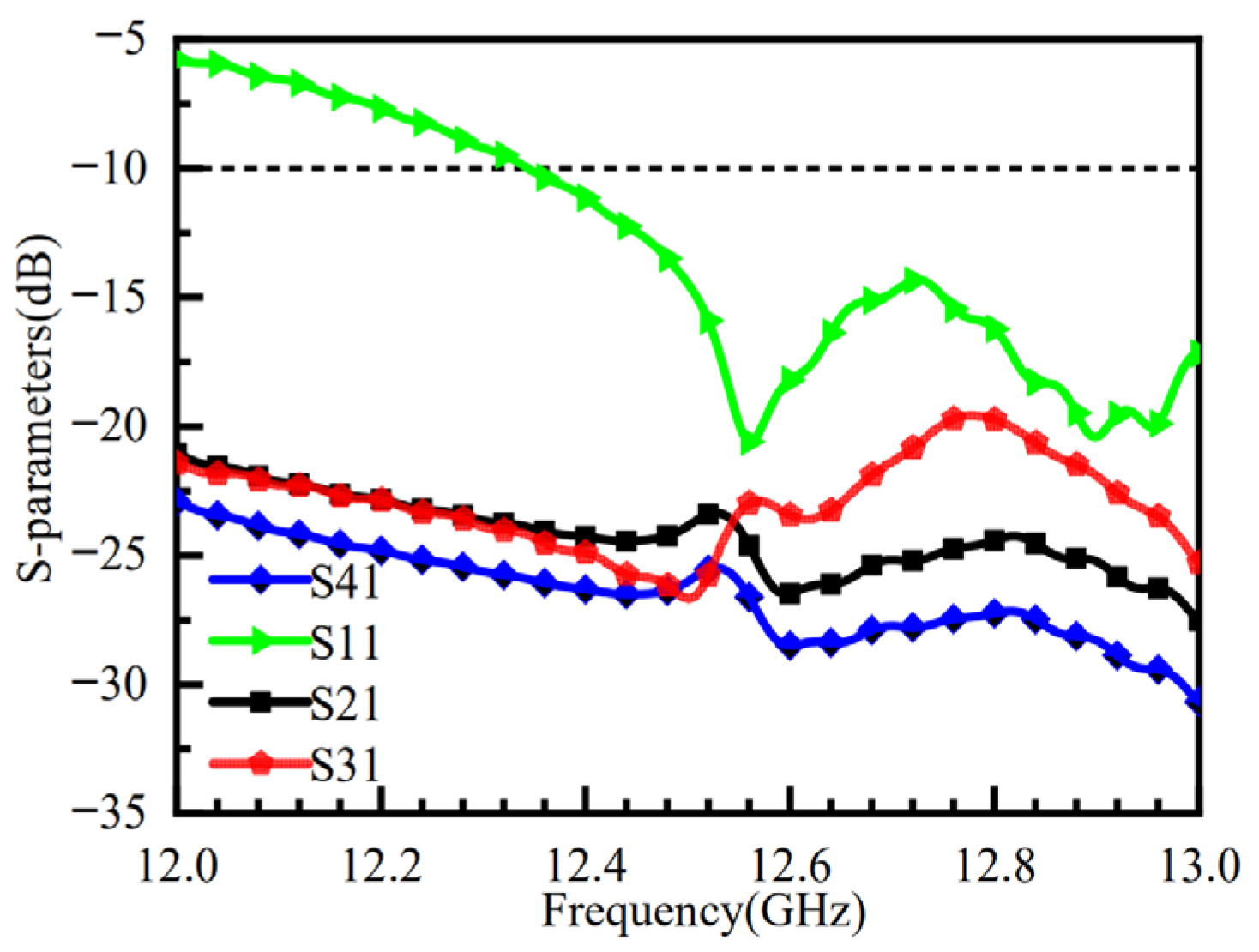
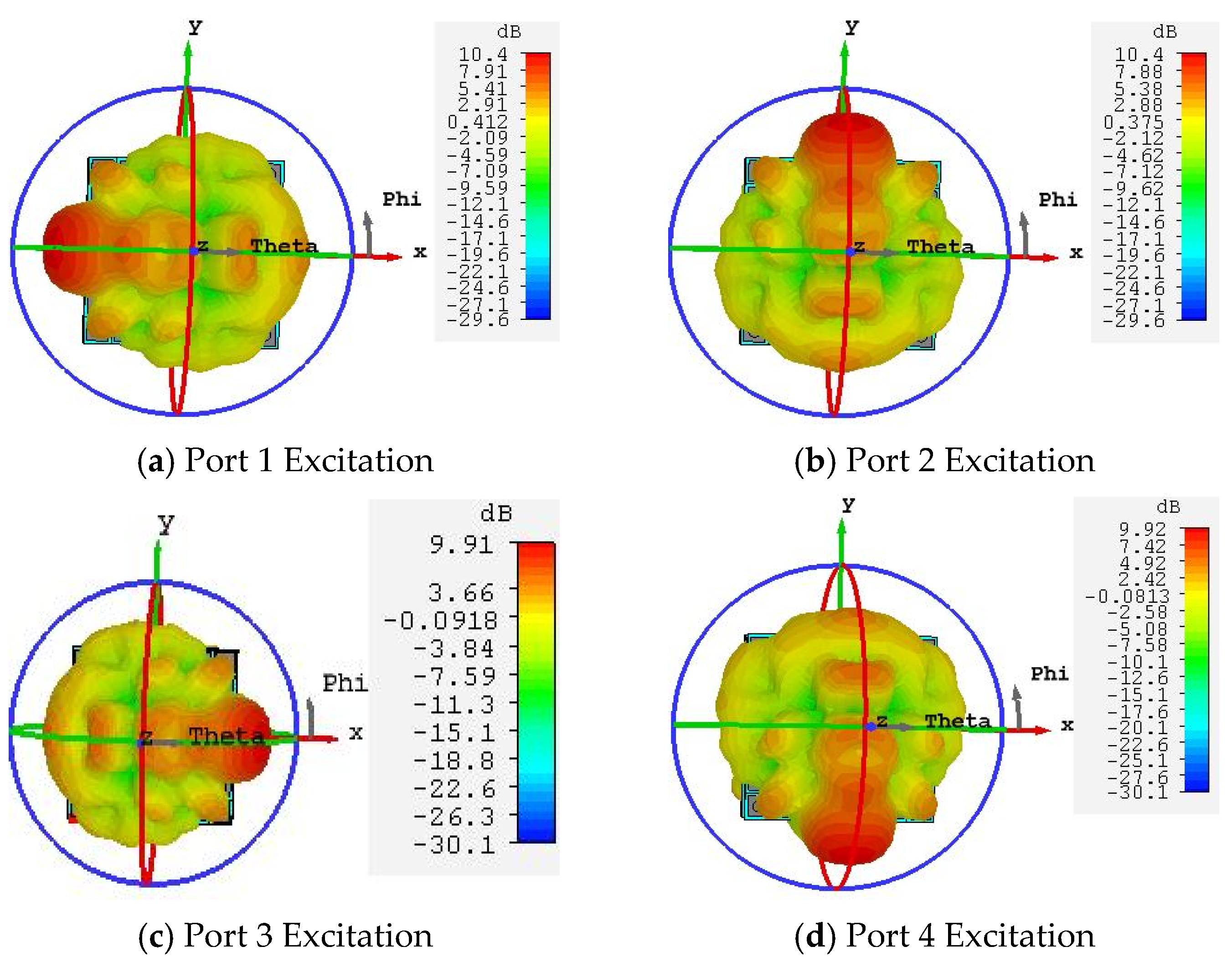
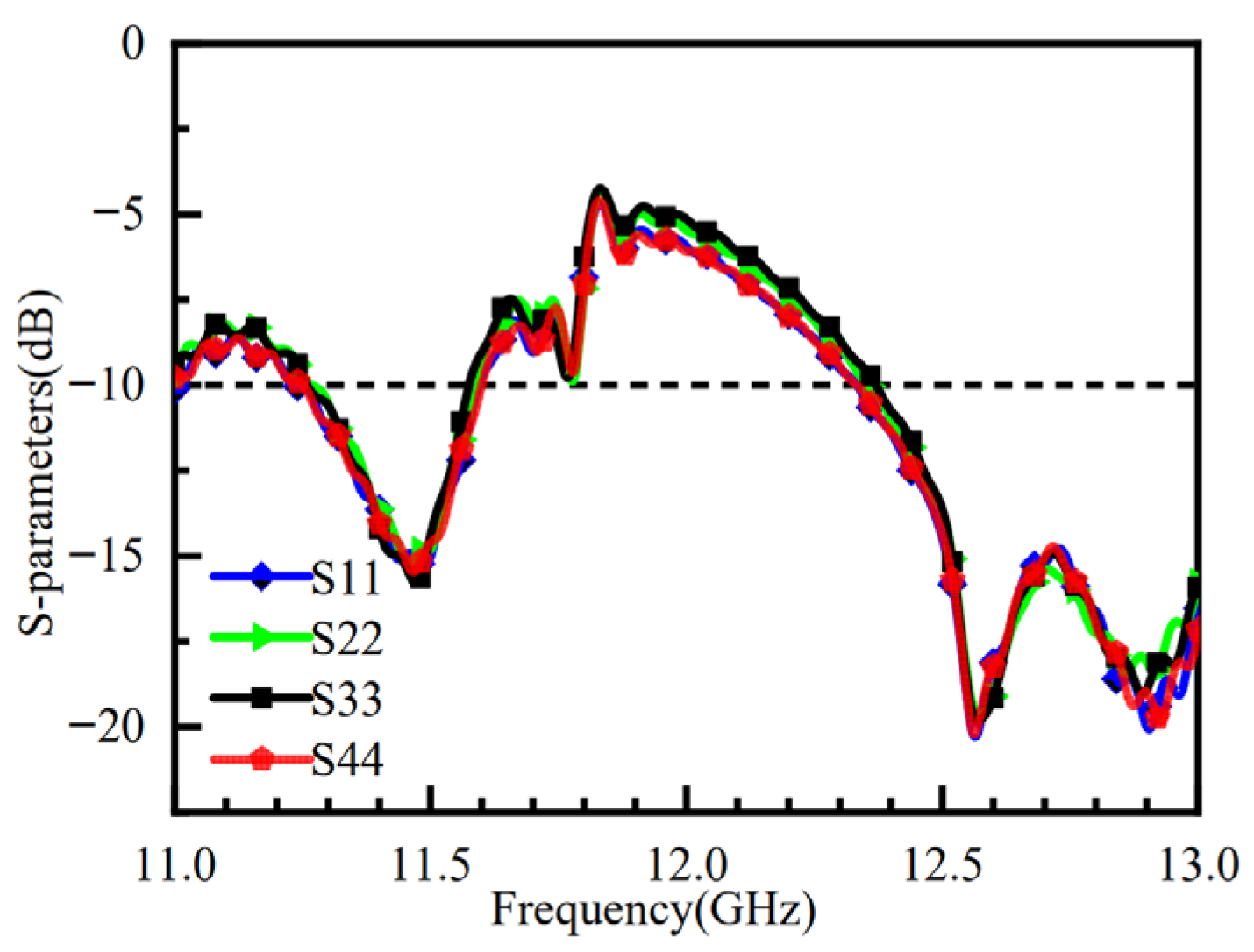


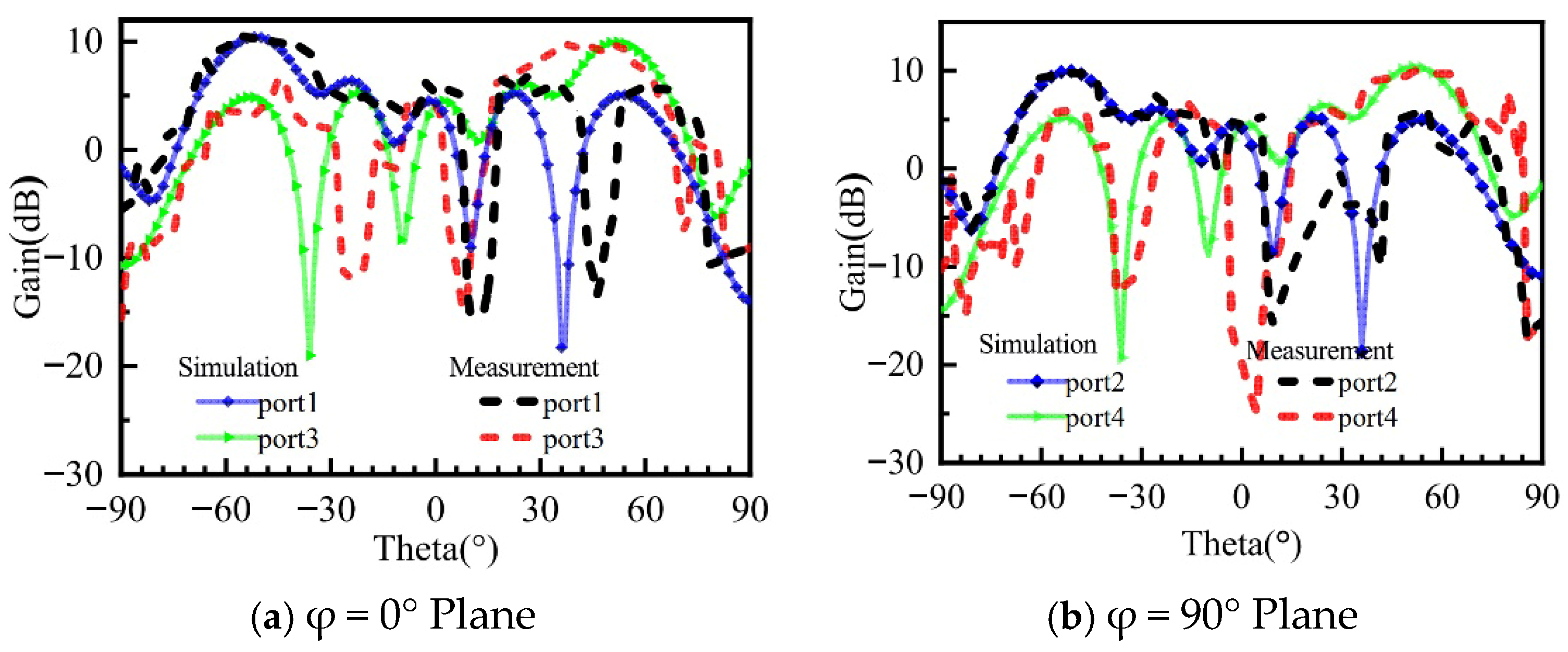
| Parameter | h_ms | L | W | r | h1 |
|---|---|---|---|---|---|
| Dimensional (mm) | 1.5 | 55.4 | 55.4 | 1.7 | 1.5 |
| Parameter | W_L | W_d | W1 | W_ms | L_ms |
| Dimensional (mm) | 6.2 | 2 | 39 | 8 | 6.2 |
Disclaimer/Publisher’s Note: The statements, opinions and data contained in all publications are solely those of the individual author(s) and contributor(s) and not of MDPI and/or the editor(s). MDPI and/or the editor(s) disclaim responsibility for any injury to people or property resulting from any ideas, methods, instructions or products referred to in the content. |
© 2025 by the authors. Licensee MDPI, Basel, Switzerland. This article is an open access article distributed under the terms and conditions of the Creative Commons Attribution (CC BY) license (https://creativecommons.org/licenses/by/4.0/).
Share and Cite
Liu, N.; Huang, L.; Huang, L. Design of a Multi-Beam Switching Antenna Loaded with a Square Metasurface. Micromachines 2025, 16, 1298. https://doi.org/10.3390/mi16111298
Liu N, Huang L, Huang L. Design of a Multi-Beam Switching Antenna Loaded with a Square Metasurface. Micromachines. 2025; 16(11):1298. https://doi.org/10.3390/mi16111298
Chicago/Turabian StyleLiu, Ningchuan, Lin Huang, and Lingxiao Huang. 2025. "Design of a Multi-Beam Switching Antenna Loaded with a Square Metasurface" Micromachines 16, no. 11: 1298. https://doi.org/10.3390/mi16111298
APA StyleLiu, N., Huang, L., & Huang, L. (2025). Design of a Multi-Beam Switching Antenna Loaded with a Square Metasurface. Micromachines, 16(11), 1298. https://doi.org/10.3390/mi16111298







